Oh cherished cross! Through thee my most bitter trials are replete with graces! – St. Paul of the Cross
What are the various symbols of Easter, what do they mean, and what do they have to do with the Resurrection of Our Lord? These symbolic chocolates provide a beautiful and yummy opportunity to share the meanings behind each of the following Easter symbols:
Cross
The cross is the most universal and oldest of all Christian symbols. It not only symbolizes Christ, but for Christians it is also a symbol of our religion and redemption won for us through Christ’s sacrifice on the cross.
Lamb
The lamb is also a symbol of Christ. In the Old Testament lambs were often sacrificed on an altar to expiate sins. Because Christ was sent as a sacrifice for the sins of the world, Christians refer to Him as “The Lamb of God (Latin, Agnus Dei)” (John 1:29), and “The Paschal Lamb” (Exodus 12:3-11) from whose sacrifice shelters the People of God.
Bread of Life
Bread is the universal symbol for sustaining and nourishing life. It symbolizes God’s nurture and care of His People. The Israelites in the desert were fed manna from the heavens prompting Moses to exclaim, “this is the bread which the Lord has sent for you to eat” (Exodus 16:15). Christ likened Himself to manna when after the miracle of the loaves, he spoke the words, “For the bread of God is that which comes down from heaven, and gives life to the world.” They said to him, “Lord, give us this bread always.” Jesus said to them, “I am the bread of life; he who comes to me shall not hunger, and he who believes in me shall never thirst.” Bread is also used at each mass to become the Body of Christ in keeping with the Lord’s command: “Then he took bread, and blessed and broke it, and gave it to them, saying, This is my body, given for you; do this for a commemoration of me” (Luke 22:19).
Lily
The lily symbolizes purity. Its stoic structure, pure white color, and delicately sweet aroma attribute to qualities of royalty, purity, and chastity. It is the symbolic flower of the Blessed Virgin Mary and is sometimes depicted with other saints who possess these qualities. A lily among thorns represents the Immaculate Conception as the purity of the Virgin is preserved among the fallen nature of the world. Legend says that the lily originated from Eve’s tears when she and Adam were banished from the Garden of Eden. Another legend claims that lilies sprang up from the ground when drops of blood fell to the foot of the Cross. During the Easter season, many churches line their altars with Easter Lilies to signify the resurrection of Jesus Christ and the hope of eternal life.
Egg
The egg represents the resurrection. Like the tomb of the crucified Savior, the egg encloses a self-supported life. At the appointed time, a new and glorious life within bursts forth from its enclosure.
Butterfly
The butterfly is also a symbol of the resurrection of Christ, but moreover the resurrection of man, as Christ promises us. The three stages in its life (caterpillar, chrysalis, butterfly) can be attributed to the three stages of man’s existence (life, death, and resurrection).
Peacock
Christians have used the peacocks as the symbol of immortality and are an ancient symbol of the Resurrection. Legend tells that the flesh of the peacock never corrupts. The peacock is often depicted in Christian art such as in Fra Angelico’s Adoration of the Magi and other Nativity scenes.
Bells
To the Christian, bells function as a summons to worship. They are rung at the procession before Low Mass, at the Sanctus to call the Faithful to enter into the deep mystery of Holy Eucharist, and at mass they are rung again to worship the elevated Body and Blood of Christ at the altar. More recently they have been used to herald the election of a new pope. Bells from local church towers also ring as reminders of the Faithful within earshot to engage in daily prayer devotions. The Angelus Bell rung at 6 am, 12 pm, and 6 pm calls upon the Faithful to pray the Angelus. Some areas ring a De Profundis bell to pray for the faithful departed. Bells are another aid for the Christian to converse with God. In some countries the bells are silent from Holy Thursday until Easter Sunday. In the middle ages farmers would comfort their families by saying, “The bells have flown to Rome, but they’ll come back on Easter!”
Supplies:
- Easter Symbols Chocolate Coins (download my free printable here)
- Chocolate Coins, 8 each
- Scissors and/or Circle Punch
- Glue Stick
- Drawstring Pouch or Clear Treat Bag, 1 each
Directions:
Cut out Easter Symbol images using scissors or circle punch.
While explaining each of the various Easter symbols, have the children glue the images onto the chocolate coins.
Place the Easter Symbols Candy into a drawstring pouch or clear treat bag.
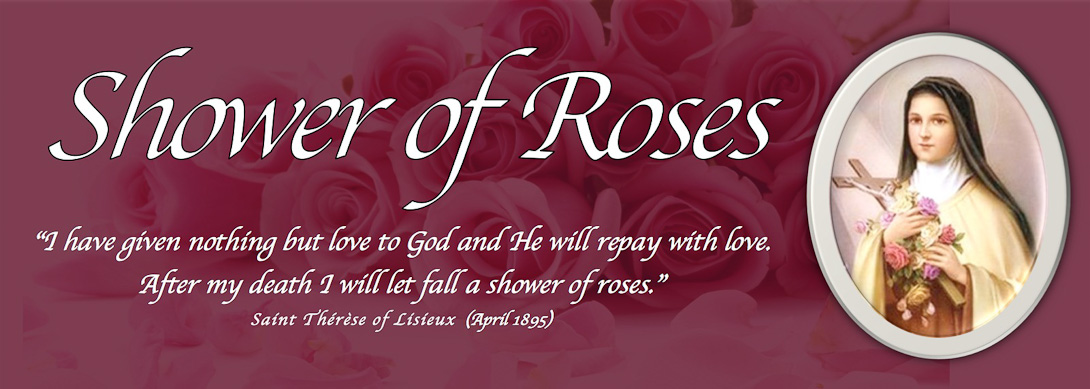
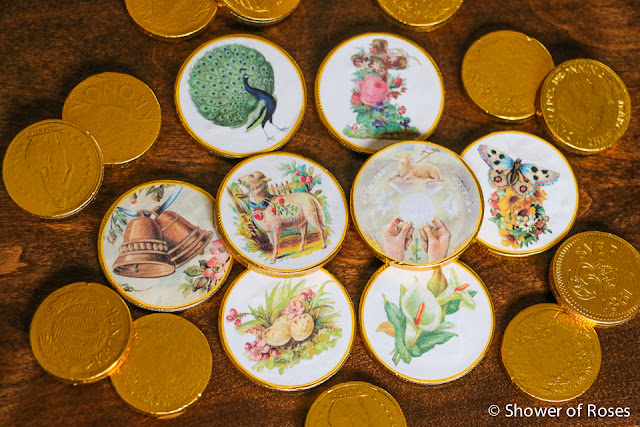
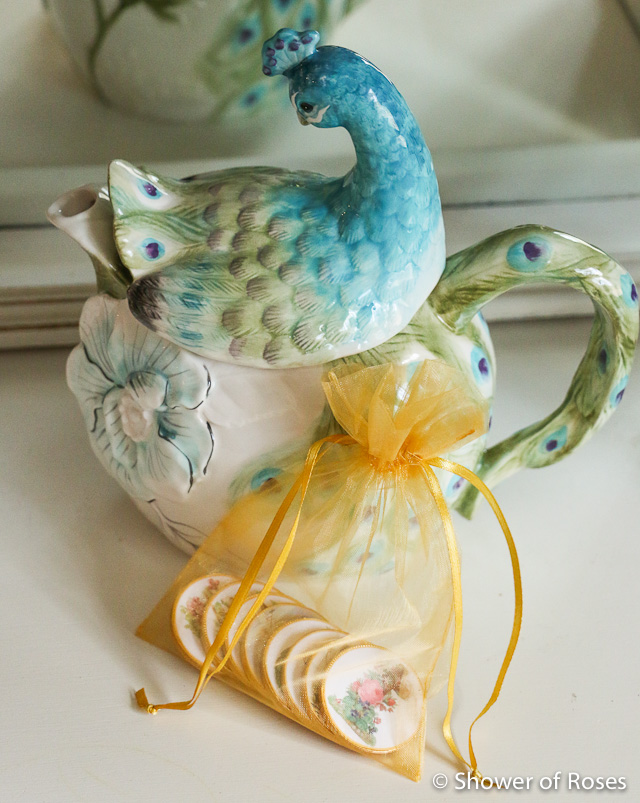
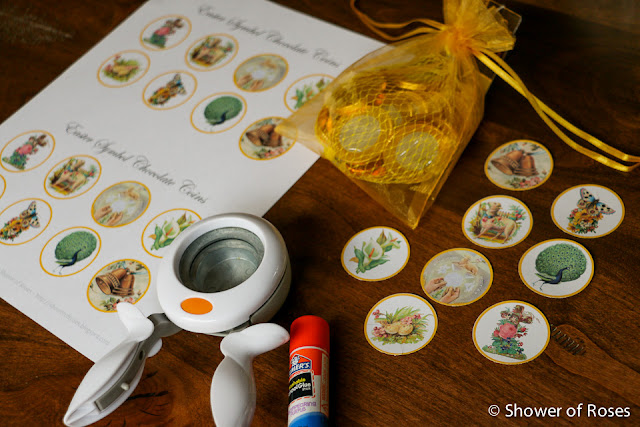
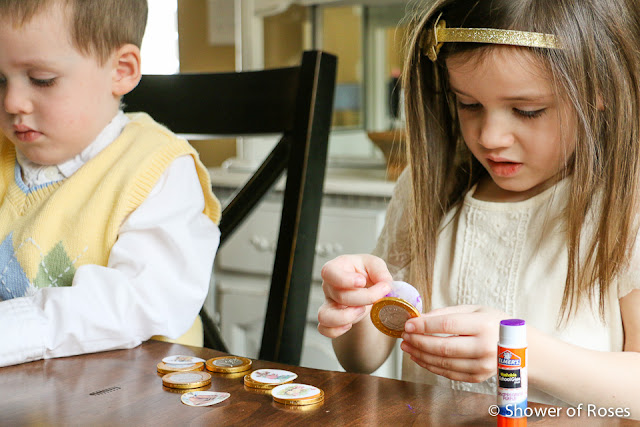
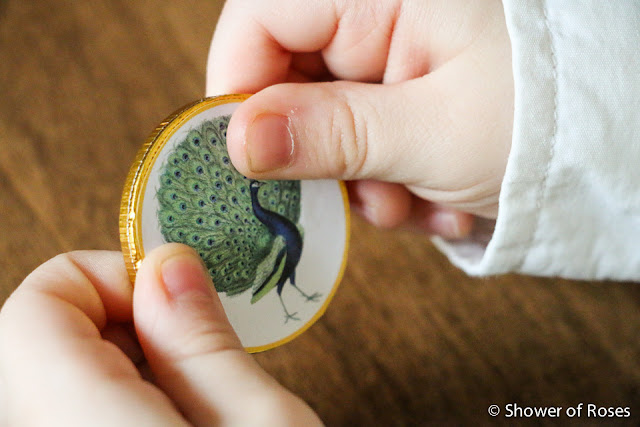
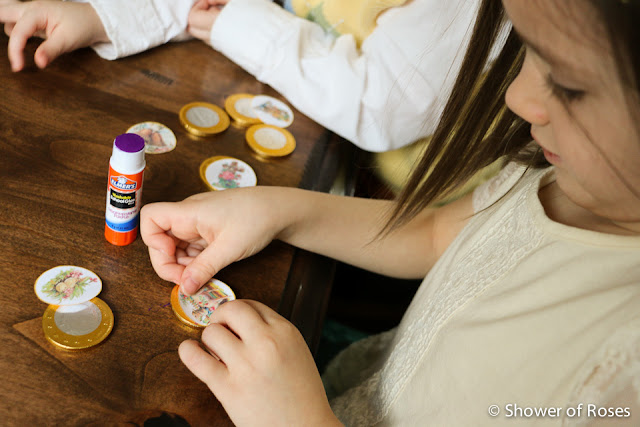
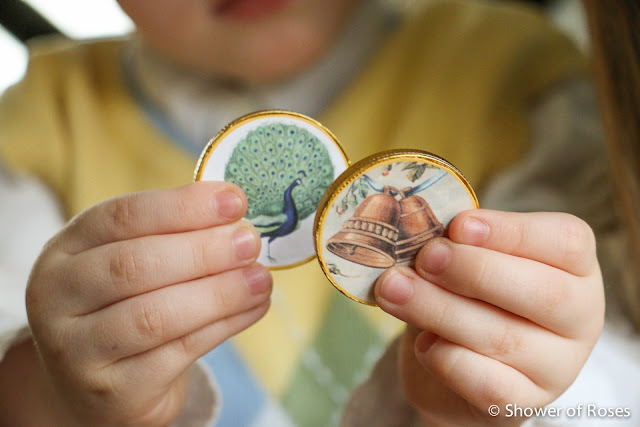
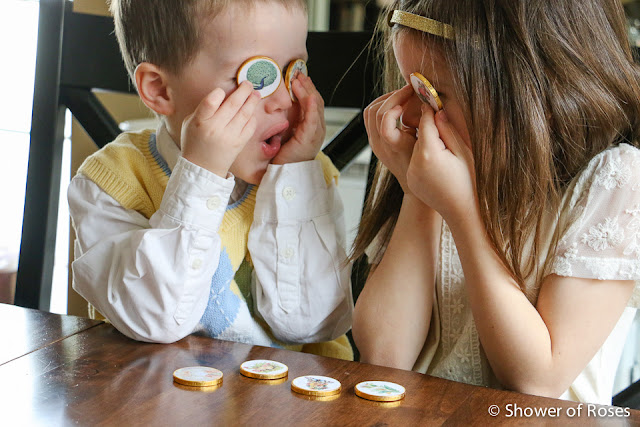
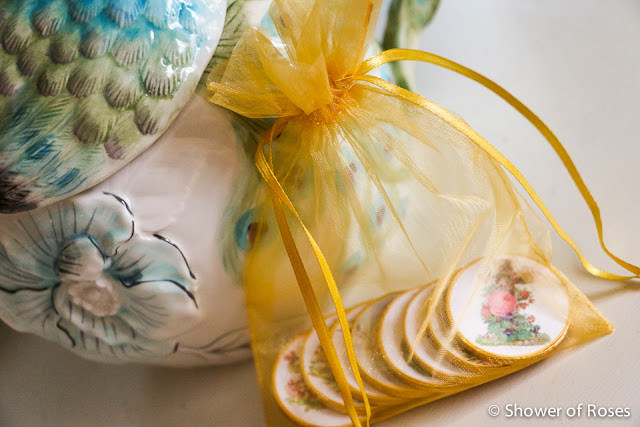
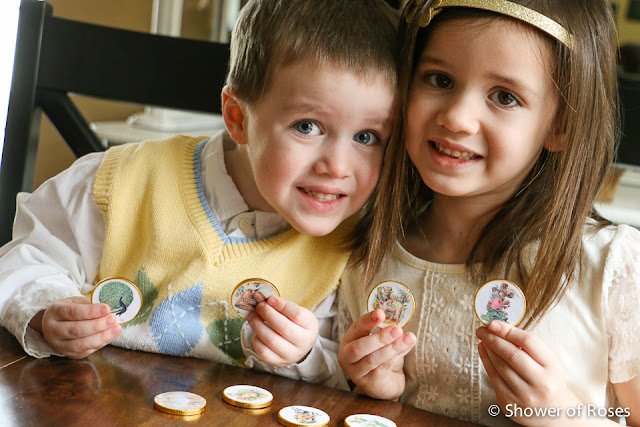






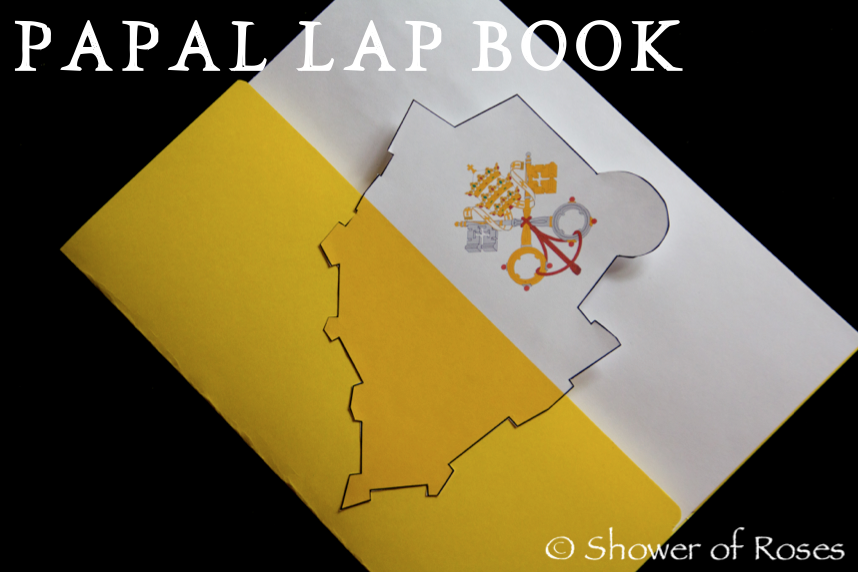
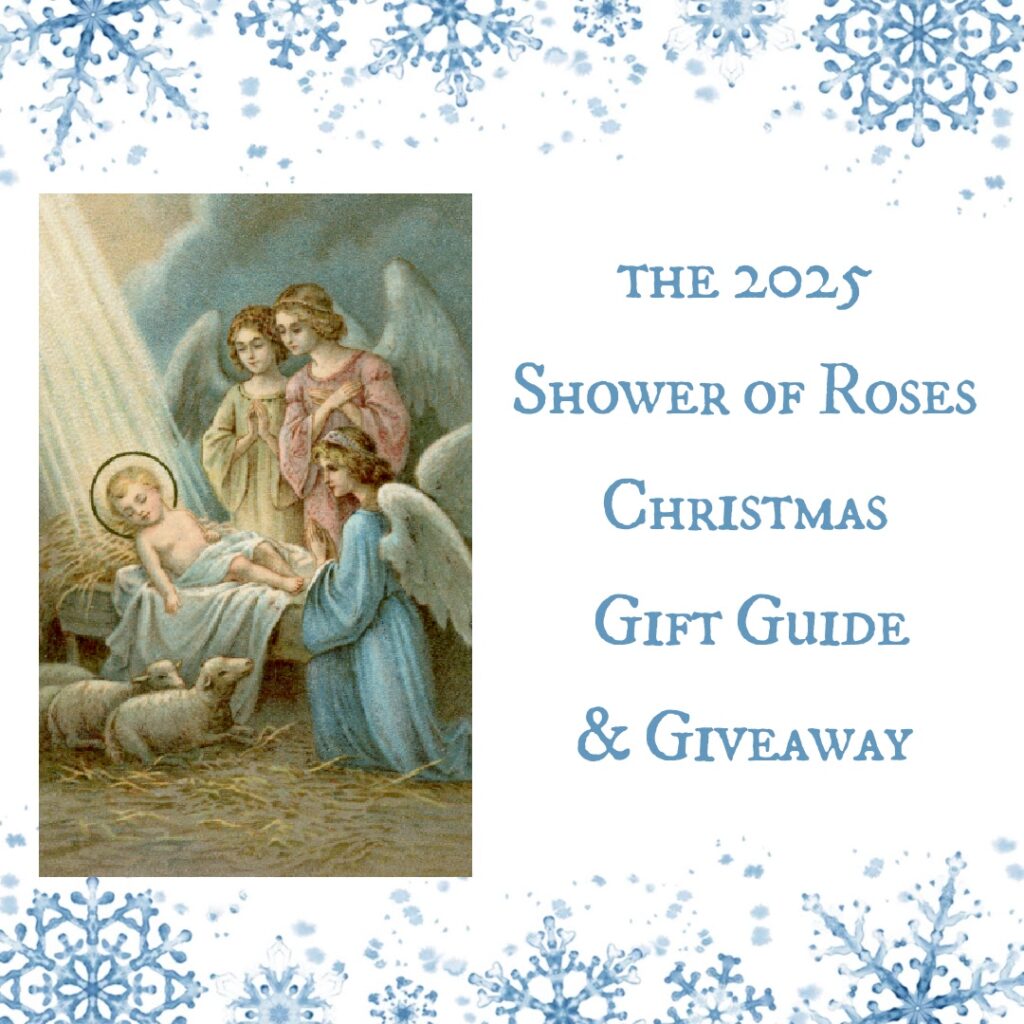
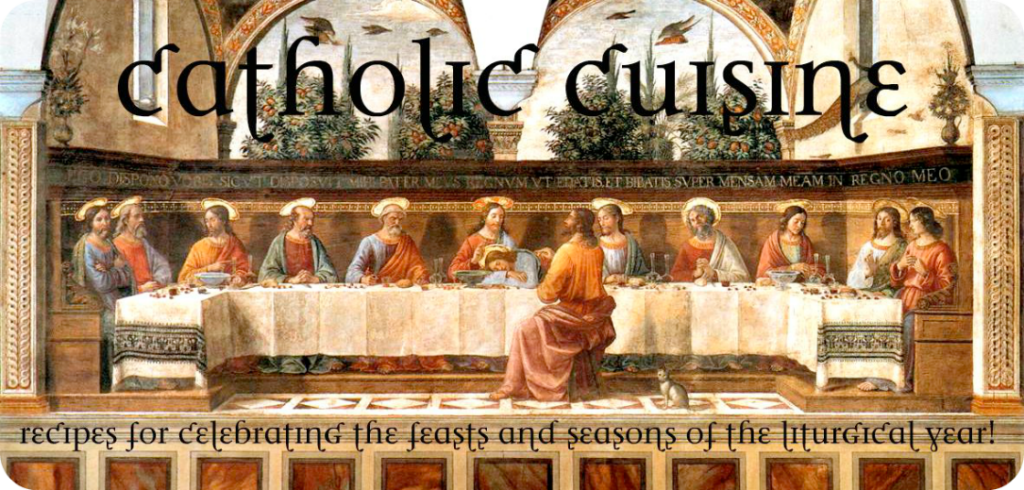



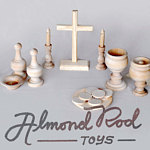

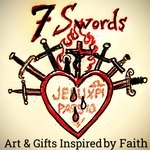

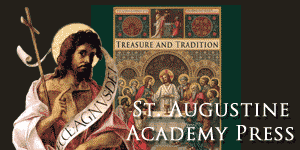















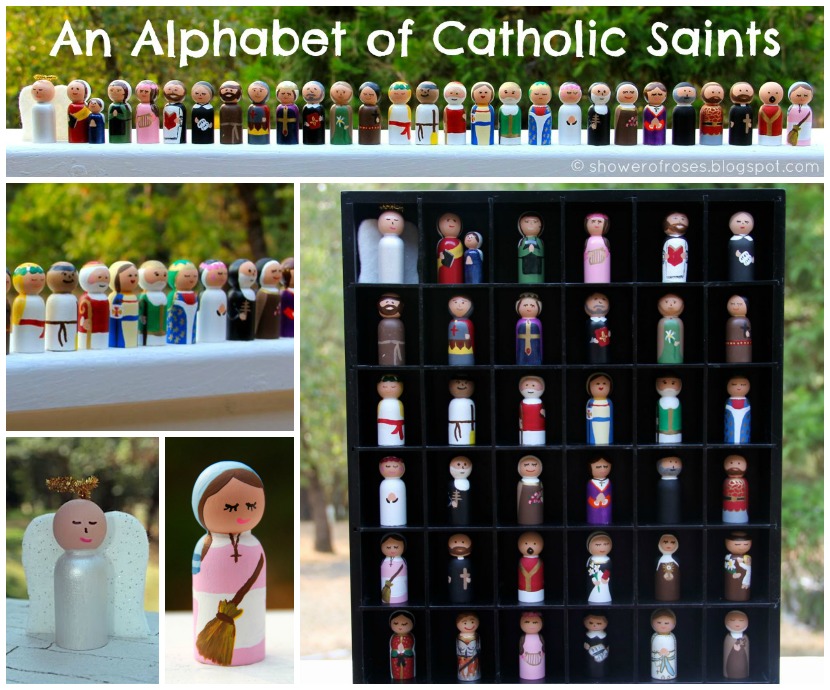

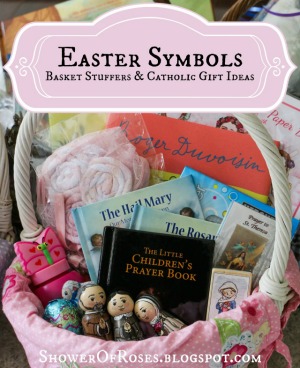

0 Comments